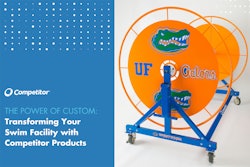|
Copyright 2013 Gannett Company, Inc. All Rights Reserved USA TODAY |
|
August 30, 2013 Friday
First EDITION |
|
MONEY; Pg. 1B
|
|
1461 words
|
| College football teams rely on iPads as much as shoulder pads; It's tech warfare on the field these days |
|
Jon Swartz, @jswartz, USA TODAY
|
|
Football has been built on X's and O's, war analogies and fire-and-brimstone speeches. Add to that, technology? As head coach of one of the country's top football programs, University of Georgia's Mark Richt oversees an enterprise with the latest and greatest in technology: iPads and iPhones by the bushel, Mac Pros for video review, sophisticated software and a new cloud-computing platform. In the swelter of 93-degree humidity, overlooking a pristine practice field abutting an opulent $42 million state-of-the-art football complex/museum, Richt is CEO of Bulldog Nation. "It's like a tech start-up," says Brett Greene, Georgia's director of video operations. Georgia's football program offered a rare, behind-the-scenes peek at its operations and the role that technology plays in helping recruit top talent and refine strategy. Adjacent to Richt's sprawling office, there is a videoconference room for staff meetings. Down the hallway, a video suite with Mac Pros and iMacs can run up to 64 video screens -- enough to turn any NFL franchise green with envy. As the college football season kicks off, bits and bytes will be as vital as blocking and tackling. (Georgia opens at Clemson on Saturday.) The top college football programs in America -- from here to Eugene, Ore., to Columbus, Ohio -- are accelerating their use of technology in all facets of their organizations. They're investing in iPads as digital playbooks, elaborate video equipment to break down game footage and sophisticated data crunching to gain a strategic edge. And they are implementing cloud-based systems to access that data from anyplace at any time. Some -- like USC and UCLA -- have taken to the sky with drones that film practice. The flourishing tech arsenal of major football programs not only allows them to develop intricate game plans and recruit, but better manage time -- NCAA rules allow only 20 hours of practice and game time for athletes each week. "It's a (technological) arms race," says Ben Brandenburg, a recruiting assistant at Georgia. Several states away, Les Miles, head coach of two-time national champion LSU, shares that sentiment. "You must have a (technology) presence," says Miles, whose "Mad Hatter" moniker belies his tech savvy. "If you don't, you cannot compete effectively." Miles has been at the intersection of tech and college football since he spotted an Apple rep toting an iPad in an airport a few years ago. "He looked like a magician, doing all these things," Miles marvels. "He enlightened me to the possibilities" of using an iPad as a playbook and organizing tool, Miles says. Shortly after, he designed an iPad app -- the "Les Miles Method" -- that illustrates football plays in animation and graphics. In the blur-fast, slam-bang world of the Southeastern Conference, technology has become as important as recruiting and coaching in gaining an edge. And, increasingly, tech is a key harbinger in successfully recruiting prospects and coaching them. Georgia and LSU are among the top contenders in the SEC, a college football powerhouse whose lifeblood is five-star high school recruits, elite coaches and fanatic football fans. How competitive? The SEC has captured the last seven national championships in football, and five of its teams -- Alabama, Georgia, South Carolina, Texas A&M and Florida -- are ranked in USA TODAY's preseason top-10 poll. "We are constantly looking for the next technology that is going to give us that slight advantage over the competition," says Troy Finney, senior director of sports technologies at two-time defending champion Alabama. TECH EVERYWHERE From the locker room and sidelines to the stands and coaches' box upstairs, tech is seemingly everywhere in the college game: Recruiting. Hundreds of millions of video clips of high school and college football games are floating on the Internet, making it a daunting task to find blue-chip prospects. Hudl, with a data library of 400 million videos, has become an indispensable tool for recruiters to filter through all the clutter -- as well as for athletes to promote themselves online. An index lets coaches search videos to find players by position, height, weight, speed and skill level, says Hudl Chief Technology Officer Brian Kaiser. "All schools have to come to grips with social media," says Pac-12 Networks commentator Rick Neuheisel, a former UCLA quarterback who coached at his alma mater, Colorado and Washington. Facebook messages, considered e-mail by NCAA rule makers, now let recruiters talk to high school athletes as often as they please. NCAA rules limit one phone call or text a week. Equipment. Some Stanford football players are wearing mouthpieces equipped with tiny sensors to measure the number and force of head impacts during games and practice. The sensors send instant information to doctors on the sideline. Health and rehabilitation. Inside the University of Oregon's new football operations center (estimated value: more than $100 million), two cryogenic tubs help heal athletes and release toxins from their bodies after practice, says Craig Pintens, a spokesman for the University of Oregon athletics department. Fan experience. Game-day tech use extends from the sidelines to the stands. At Michigan's 110,000-seat stadium, Wi-Fi is an annual challenge. That's why the school consulted with officials at Gillette Stadium in Massachusetts to improve the situation. It also launched a "virtual tailgate" on the Web and mobile devices so its 520,000 alumni in the USA can follow the Wolverines, says Jordan Maleh, director of digital marketing for Michigan's athletic department. "Old media pages (in the guise of game-day programs) look tired," says Bob Morgan, CEO of SportStream, a social-media company that showcases content online for 15 football teams, including Michigan, Baylor and Florida. A typical Web page includes Instagram photos, online chats and the sale of merchandise and tickets. Tech has made its imprint most vividly in the use of game film, considered the lifeblood of any team's strategy. It's on film where coaches study the strengths and weaknesses of their opponents, leading to a game plan designed to give them an advantage. "We can install 15 times more (plays and formations) now" than a few years ago, says Mike Bobo, Georgia's offensive coordinator. He quarterbacked the team in the late 1990s. "Kids are consuming more content, faster. They take to (an iPad)." From his office at Georgia's football complex, Bobo slices and dices plays on his Mac Pro and iPad, overdubbing some with voice instructions. He searches years' worth of video to view specific scenarios. For example, what formation and play is Clemson most likely to run on fourth-and-goal from the 5-yard line? It hasn't always been this easy. Few people in college football are better versed in the history -- and art -- of film use than Joe Tereshinski, a former Bulldog player (in the mid-1970s) who ran film and video operations for 23 years. He's now the team's strength coach. "We went from a can of film (of one game) to a (hard drive) the size of a quarter with five years' worth of games, practices and every game of our opponent," Tereshinski says. From the 1940s until 1987, teams swapped by hand a can of film from their most recent game -- often days after the game, says Tereshinski, known as "Coach T" in the football complex. That all changed in the late 1980s, when UCLA and Indiana pioneered videotapes. By the early 1990s, Betacam allowed video to be played back and forth and in slow motion. Today, college and pro teams employ a digital-video system in which video is stored on a centralized server -- available anytime, anywhere. "Football is going to a whole new level," Hall of Fame receiver Jerry Rice says. Rice, who on Wednesday participated in an Intel-backed panel on the intersection of football and tech, says information is so specialized today that players can assess the skill levels of others based on the field and weather they play in -- by quarter. The next evolution is occurring on mobile devices, where coaches will be able to view and analyze a game from their smartphone or tablet minutes after a game concludes. "It's about access, availability and speed," says Matt Bairos, CEO of XOS Digital, a leading video-analysis company that works with more than 100 college football teams, including Georgia, LSU, Oregon and Michigan. In their never-ending quest for an edge, teams will continue to pour money into a sophisticated set of tech tools for film use, drills, conditioning and technique -- creating mini-start-ups on college campuses nationwide. The only question, it seems, is how far they will go. "Technology is a sign of commitment to excellence," Richt says. "But a team is only as good as its athletes and staff." |
|
photo Michael A. Schwarz, USA TODAY
|
|
August 30, 2013
|
Terms and Conditions Privacy Policy



































